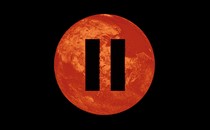The Real Meaning of Trump’s ‘Unified Reich’ Post
5 min read
At this point, Americans will believe almost any story about Donald Trump. That is both a strength and a weakness for him. On the one hand, it means that nearly nothing he says, including for example that he wants to be a dictator, penetrates too deeply. On the other hand, it means people rarely extend him the benefit of the doubt, even when it’s warranted.
That’s what happened yesterday, when Trump’s Truth Social account posted a video featuring fake newspapers with celebratory imagined headlines about Trump (IT’S A LANDSLIDE! TRUMP WINS!!). Below, a sub-headline referred to “the creation of a unified Reich.” Naturally, the combination of Trump and a “unified Reich” was combustible. “This man is a stain, a Nazi, a pure a [sic] simple garbage of a human being,” fulminated Adam Kinzinger, the former Republican congressman. “Flush Trump down the toilet.” The controversy is illuminating about Trump and the presidential campaign, but perhaps not in the ways that it first appeared.
Trump’s account has removed the video, and his campaign said it did not create the video but reposted it from another user. It also said the post was done not by Trump but by a staffer who hadn’t noticed the “Reich” reference. Although Trump has a long history of blaming staffers for foolish posts, the excuse here is plausible. The video appears to have been made using a stock video template available online. And the text that appears in the video—about the “unified Reich”—comes, as the Associated Press notes, from a Wikipedia entry about World War I (“German industrial strength and production had significantly increased after 1871, driven by the creation of a unified Reich”) rather than anything about Nazis. It’s a safe bet that the gospel singer Candi Staton wasn’t aiming to boost Hitler when she used the same template for a video of a song about the 16th Street Baptist Church bombing.
This election cycle has seen a slew of stories about how the Trump campaign is far more professionally run and regimented than in 2016 and 2020. That appears to be true, but only in a limited sense. Any competent campaign would have vetted such a video before it reposted it in order to avoid just this kind of mess. But Trump and his team can’t or won’t bother to look carefully at what he (or his staff) reposts on social media, and never have. In 2016, he posted an anti-Semitic meme with a Star of David and then tried to convince people it was a “sheriff’s star.” In 2017, he posted a GIF that showed him body-slamming CNN, created by a Reddit user who, whaddya know, also posted lots of anti-Semitic material. Earlier this year, a brief controversy broke out when Trump posted a video of a convoy of trucks decked out in pro-Trump swag, including an image of a bound and tied Joe Biden on one truck’s tailgate.
Despite having served as president for four years, and despite being a gifted political messenger, Trump has never grasped—or perhaps never cared—that sloppy words from someone in his position can be hugely consequential, and he resists guardrails that would protect him.
Trump’s problem here is that even though his excuse makes sense, he is also an authoritarian who has used anti-Semitic language. Believing that he might have posted subtle Nazi messaging doesn’t require much of a leap. Not only did he attempt to steal the last election and promise to be a dictator, but he has also consistently disregarded checks and balances and suggested “termination” of the Constitution. He called neo-Nazi marchers in Charlottesville, Virginia, in 2017 “very fine people,” hobnobbed with white nationalists, and delivered menacing remarks about American Jews who do not support him—on Rosh Hashanah, no less. His former chief of staff says Trump once told him that “Hitler did some good things.” It’s no coincidence that so many of those past sloppy reposts came from supporters of his who hold hateful views. (It also doesn’t help that a staffer on the campaign of Ron DeSantis, a rival and would-be successor in the GOP presidential primary, was caught surreptitiously inserting Nazi imagery into social-media posts.)
The Biden campaign quickly pounced on the situation. “Trump posts a new ad foreshadowing a second Trump term that says he will create a ‘UNIFIED REICH,’ echoing Nazi Germany,” its official account posted on X. The Biden campaign is not stupid, which means both that it should have figured out the real origin of the post (and may well have) and also that it was not going to let an opportunity to savage its opponent pass by.
Biden’s team has been taking a more aggressive approach to Trump as the election nears. After years of elliptically referring to his “predecessor,” the president has begun naming Trump in attacks. The rest of his apparatus is also attacking Trump, trying to remind voters of the reasons they rejected him in 2020. In this case, the Biden campaign seems to have succeeded in manufacturing a controversy. Every major outlet has a headline this morning about the video (a representative example from The Washington Post: “Trump’s Truth Social Account Shares Video Referencing ‘Unified Reich’). These stories are not untruthful—he did share the video—but they are also a little misleading, though perhaps unintentionally so.
Whether the backlash to the video helps Biden beat Trump in November is anybody’s guess. Trump’s critics debate whether it is more effective to attack Trump as a threat to democracy, criticize his unpopular policy ideas, paint him as corrupt, or focus on Biden’s positive accomplishments. The incident shows exactly why Trump was so bad at being president. It probably doesn’t tell us anything new about Trump’s feelings regarding Hitler that we didn’t already know. The bizarre thing is that many voters may hear about the controversy and assume that it reveals Trump’s sympathy for the Third Reich, and then vote for him anyway.



